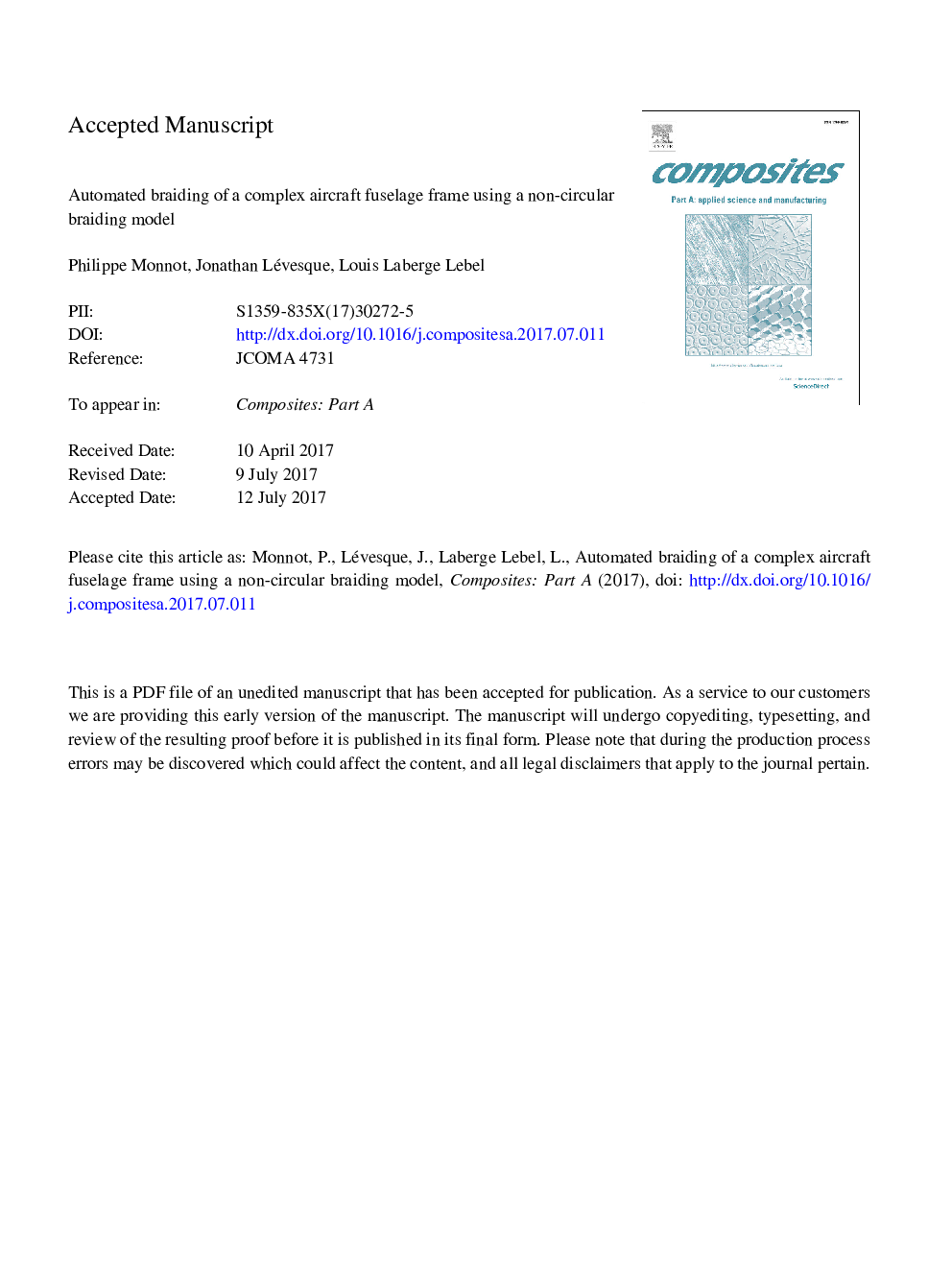| Article ID | Journal | Published Year | Pages | File Type |
|---|---|---|---|---|
| 5439446 | Composites Part A: Applied Science and Manufacturing | 2017 | 31 Pages |
Abstract
Braided structural composites have the potential to replace aerospace primary structure traditionally manufactured with preimpregnated fabrics and cured in autoclave. An improved braiding model was developed and applied to a complex fuselage frame technological demonstrator. Numerical case studies were performed in order to assess their effectiveness and to determine the best braiding parameters. A radial braiding machine was coupled to an industrial robot. The fuselage frame demonstrator mandrel was overbraided with carbon fiber yarns. Measured braid angles showed a greater difference than what was expected between the web and the flange faces. Yarn friction and interlacing forces caused the yarns to curve near the edges of the face, therefore causing the measured braid angles to vary along the face width. Moreover, discrepancies in the model's outputs prevented the braid fell front to conform around the severe cross-section variations as well as causing yarn slip over the corners.
Related Topics
Physical Sciences and Engineering
Materials Science
Ceramics and Composites
Authors
Philippe Monnot, Jonathan Lévesque, Louis Laberge Lebel,
